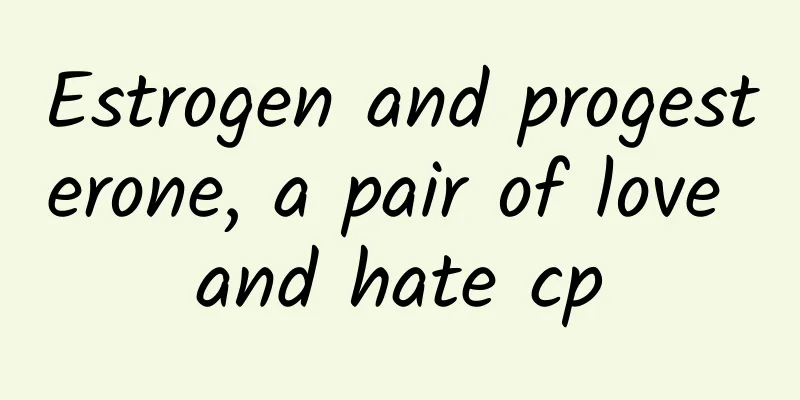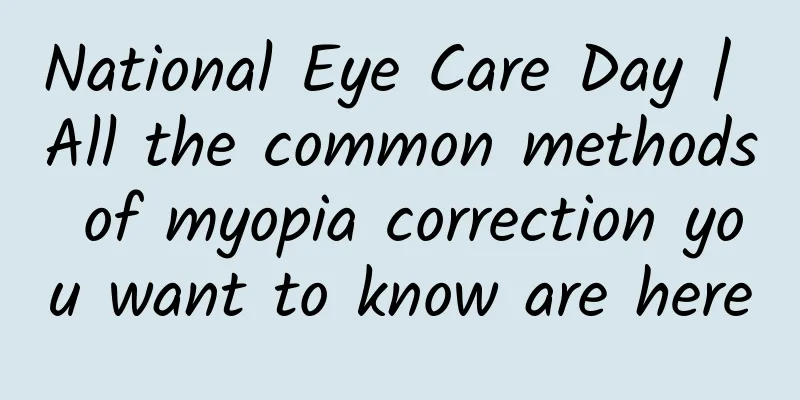Estrogen and progesterone, a pair of love and hate cp

|
Author: Hao Yanfang, Chinese Academy of Medical Sciences, Peking Union Medical College Hospital Reviewer: Yu Qi, Chief Physician, Peking Union Medical College Hospital, Chinese Academy of Medical Sciences Did you know that in women’s bodies, there is a pair of hormones called “CP” (abbreviation of “couple” in English, indicating the relationship between paired characters) that love and hate each other. They both cooperate with each other and check and balance each other, making the majority of female compatriots love and hate them. They are estrogen and progesterone. Estrogen is like a foreman, constantly directing the growth of the endometrium. Under the command of estrogen, the endometrium is like a wall, becoming thicker and thicker. Progesterone, on the contrary, is more like a decoration team, beautifying and decorating the newly built city wall, responsible for changing the endometrium from the proliferative phase to the secretory phase, creating a hotbed in the second half of the menstrual cycle, quietly waiting for the arrival of the fertilized egg. If the fertilized egg and embryo are not implanted, the estrogen and progesterone withdraw, and the endometrium loses the support of high levels of hormones, shedding bleeding will occur. These two hormones both complement and fight each other, and are usually balanced. However, once one of them takes the upper hand, the original balance is broken, which will bring some hidden dangers to the body. What if it's just estrogen? If there is only estrogen, women may suffer from a common gynecological disease called abnormal uterine bleeding associated with ovulation disorder (AUB-O). It is often manifested as infrequent menstruation, prolonged menstruation, excessive menstrual flow, irregular vaginal bleeding, etc., and generally there is no organic lesion. Adolescent girls are prone to AUB-O. This is usually because the hypothalamus-pituitary-ovarian axis of adolescent girls has not yet matured. Although the ovarian follicles grow, they cannot ovulate normally, resulting in ovulation disorders. At this time, the ovaries secrete estrogen but cannot secrete enough progesterone, leading to menstrual disorders. When estrogen levels decrease, part of the endometrium of AUB-O patients sheds, the endometrial vasoconstriction is incomplete, and it is difficult to stimulate endometrial hyperplasia, which is even more unfavorable for hemostasis. For adolescent women with AUB-O, progestin endometrial shedding is often used for treatment. Progestin can convert the endometrium, which continues to grow under the action of estrogen, into the secretory phase and has an anti-estrogen effect. When progestin is discontinued, withdrawal bleeding occurs, and the endometrium can be completely exfoliated and then quickly repaired, thereby achieving a hemostatic effect [1]. After a period of drug treatment, the patient's reproductive axis gradually develops and the two hormones in the body slowly reach a balance, and menstruation may become normal. (Copyrighted image from the gallery, no permission to reprint) When will progesterone become dominant? During pregnancy, progesterone promotes the endometrium from the proliferative phase to the secretory phase, and provides oxygen and blood supply to the uterus, which increases the thickness of the endometrium and prepares for embryo implantation. In addition, progesterone can promote the development of mammary lobules and alveoli, preparing for postpartum breastfeeding. Progesterone can dynamically antagonize the effects of estrogen during pregnancy. In the early stages of pregnancy, it inhibits endometrial hyperplasia by antagonizing estrogen, prevents the contraction of uterine smooth muscle, and plays a role in preserving the fetus. In the late stages of pregnancy, the antagonistic effect weakens and estrogen levels increase, which is conducive to the initiation of labor and makes the delivery process easier for mothers [2]. When using progestins to maintain pregnancy, whether it is intramuscular injection, oral administration, or vaginal administration, natural progestins or progestins that are close to natural are usually used. The use of regular doses has few adverse reactions and is safe for the embryo. (Copyrighted image from the gallery, no permission to reprint) What happens if estrogen and progesterone are reduced together? A decrease in both estrogen and progesterone in women often means a gradual decline in ovarian function. In the early stage, there will be insufficient secretion of progesterone, which will gradually develop into insufficient estrogen and progesterone, causing AUB-O and eventually menopause. In addition, the decline in estrogen levels can also cause four major types of symptoms: ① vasomotor symptoms such as hot flashes and night sweats; ② urogenital atrophy symptoms such as vaginal dryness and sexual intercourse pain; ③ emotional disorders such as anxiety and depression; ④ low bone mass and osteoporosis. Some women may wonder when reading this: is it possible to alleviate or eliminate menopausal symptoms by replenishing the missing estrogen and progesterone in the body? This method is indeed feasible, and it is called menopausal hormone therapy in medicine. However, it should be noted that not all middle-aged and elderly women are suitable for menopausal hormone therapy. Those with the following conditions are generally not suitable for menopausal hormone therapy. Patients with estrogen-dependent tumors, such as those with known or suspected breast cancer, are not suitable for estrogen supplementation, otherwise, the condition may become more serious. Patients with severe liver and kidney diseases and liver and kidney dysfunction. Patients with severe vascular thrombotic disease. Some unusual conditions with no clear cause. Blindly believing in advertisements that say "using hormone drugs can keep you young forever" can actually harm women. Before taking the drugs, you must go to a regular hospital to see a specialized gynecologist, endocrinologist or menopausal physician, do a health check, and take the drugs under the guidance of the physician. In short, estrogen and progesterone are more like a pair of good partners than competitors. Together, they promote the maturity of women's fertility and help women get pregnant smoothly. However, don't be afraid when both of them fade away quietly. You can still live a good life through menopausal hormone treatment under the guidance of a doctor, a reasonable diet, increased exercise, and adjusted mental state. References Yang Jinhua. Efficacy of estrogen and progesterone in the treatment of adolescent dysfunctional uterine bleeding and its impact on patient prognosis. Chinese Journal of Maternal and Child Health, 2018, 33(20): 289-291. Su Lina. Study on the value of combined estrogen and progesterone treatment for patients with early threatened abortion. Electronic Journal of Clinical Medical Literature, 2019, 6(59): 40-41. |
Recommend
Symptoms of damp heat in women
There are many aspects to women's physical he...
Can you eat flounder without skinning it? How to choose flounder?
Flounder has tender meat with few bones and is su...
What should I do if my menstrual period is heavy and there are blood clots?
Generally speaking, the amount of menstrual blood...
Are pregnant women prone to constipation?
After a woman becomes pregnant, she is often forc...
What happens if there is a lump on the upper chest?
Breast health is a very important matter for wome...
What causes vaginal bleeding?
Vaginal diseases are very common. If you have suc...
I get sick every time the holidays come. What’s wrong?
Another Spring Festival is here. During this joyo...
Pre-pregnancy preparation for second child for older women
Modern people live at a fast pace and have great ...
What tests should be done before medical abortion?
Although medical abortion is much less painful th...
How should parents care for their children who are diagnosed with mycoplasma pneumonia? See the detailed answer
Recently, mycoplasma pneumonia has become rampant...
How can we delay uterine aging?
Women nowadays think that beauty is the most impo...
Will taking anti-inflammatory drugs cause delayed menstruation?
There are many varieties of anti-inflammatory dru...
An emergency? Mastering this knowledge can save lives at critical moments!
Author: Ying Jusu, Chief Nurse, Peking University...
How long does it take to remove freckles by taking natural vitamin E?
In summer, the season of showing personal charm, ...









